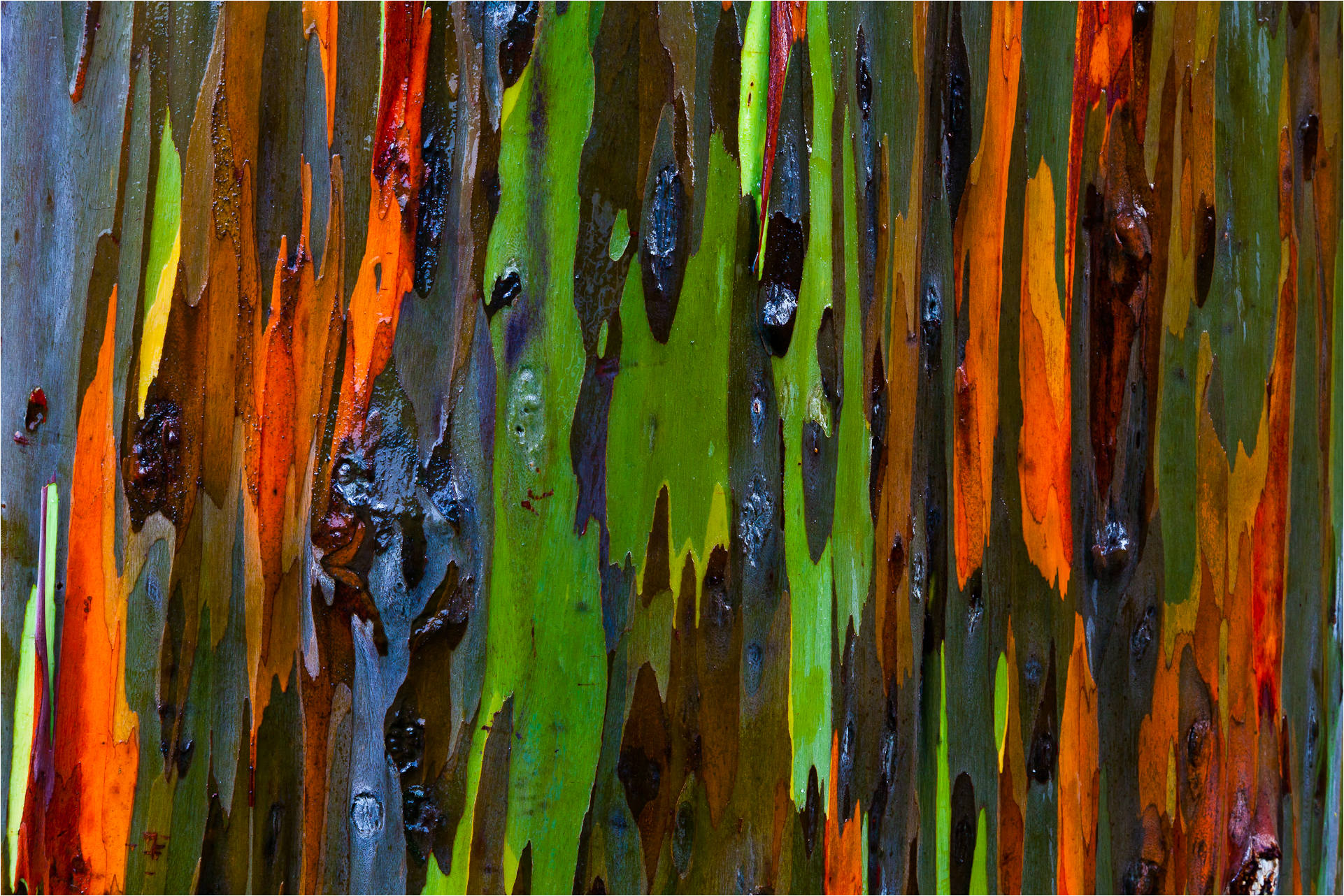Rainbow in a Tree
This eucalyptus’ kaleidoscopic bark is a photographer’s delight.

Bark from a rainbow eucalyptus, by Christopher Martin. Older bark layers in shades of pastel purple, rusty red, and burnt orange peel away to reveal younger layers in chartreuse and dark green hues.
The Willy Wonka candy coloration of the rainbow eucalyptus (Eucalyptus deglupta) makes it a photographer’s delight. “It’s like a botanical kaleidoscope,” says David Lorence, Director of Science at the National Tropical Botanical Garden in Kalaheo, Hawaii.
The bark on this tall, slender tree begins as a chartreuse green but turns dark green, pastel purple, rusty red, and burnt orange as it ages. Scant research has been done on why the colors change so dramatically, says David Lee, an emeritus professor of botany at Florida International University and the author of Nature’s Palette: The Science of Plant Color. But he volunteered to take a sample from a tree growing down the street from his South Florida home and make his best guess.
Here’s the scoop from his impromptu investigation: Dividing cambium cells—similar to stem cells in animals—produce a succession of thin barks, each dozens of cells thick, on a growing rainbow eucalyptus tree. Each bark layer has a transparent surface overlay just one cell thick, according to Lee, and the tissue underneath is packed with bright green chlorophyll. Over time, the clear surface cells become flush with the reddish brown color of tannins. These accumulations, plus a depletion in chlorophyll in the underlying tissue, lead to the apparent change in color of the bark layers.
“When you look at the tree trunk, you are seeing these multiple thin layers of bark, from the older layers peeling away to reveal younger layers,” Lee said in an e-mail. The continual peeling discourages other plants from growing on it, says Lorence of the National Tropical Botanical Garden.

While most eucalyptus species are native to Australia, where the climate is drier, the rainbow eucalyptus is indigenous to the lush forests of Indonesia and the Philippines. It’s also been introduced to places such as Southern California and Hawaii, as well as South Florida, as an ornamental tree. “It likes wet feet and a more humid climate,” says Lorence. Alternately known as the Mindanao gum, the rainbow eucalyptus grows fast—more than three feet per year—and can reach heights of more than 240 feet. Its small white flowers are packed with nectar, making it a good source for honey.
Christopher Martin, a Canadian photographer whose work has been featured in National Geographic Traveler, had heard about rainbow eucalyptus trees and decided to capture one on camera during a recent trip to Hawaii. Internet research pointed him to the Keahua Arboretum on the island of Kaua’i, where he found the tree pictured above.
On his way to the colorful grove, Martin ducked rain showers and forded a swollen stream. The precipitation turned out to be serendipitous: The clouds afforded him lots of soft, diffused light, and the water brought out deeply saturated hues in the bark. “These vibrant colors just popped” off the trunk, Martin says.
Andrew is a New York-based freelance writer. He was Science Friday’s intern during fall 2013.